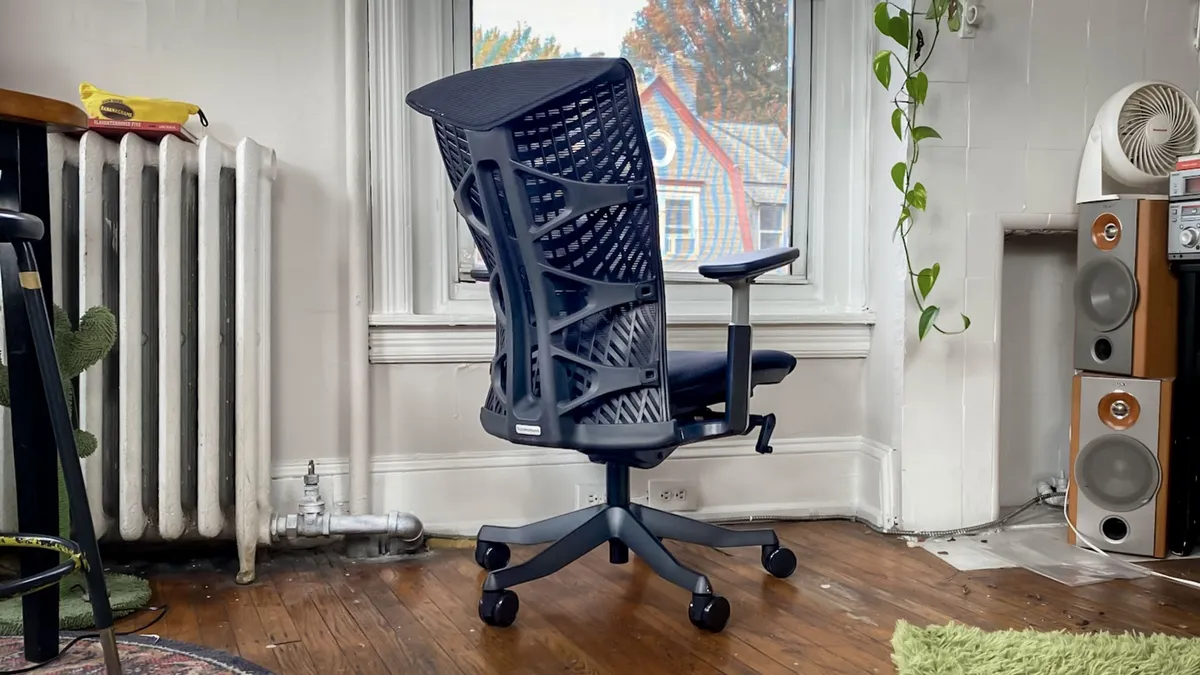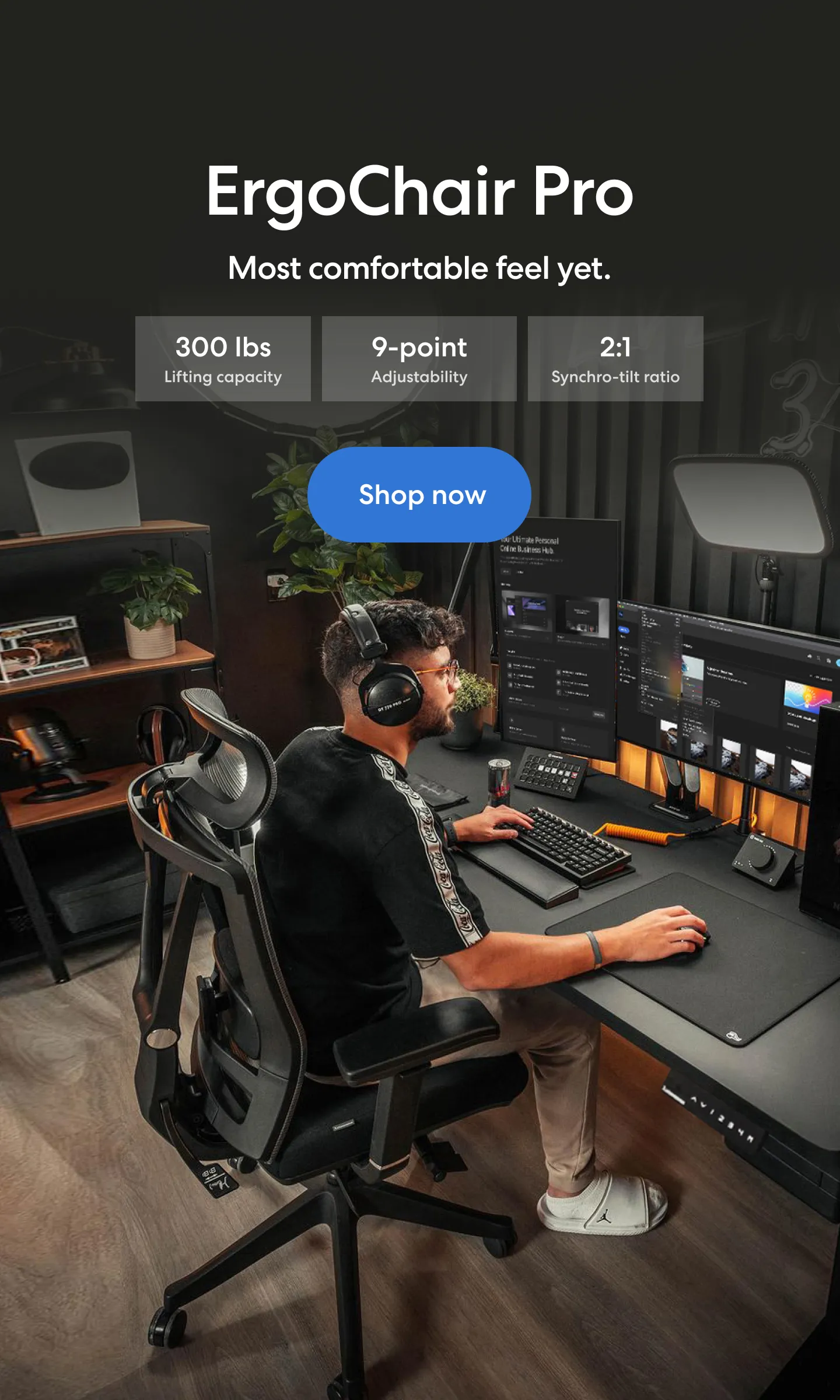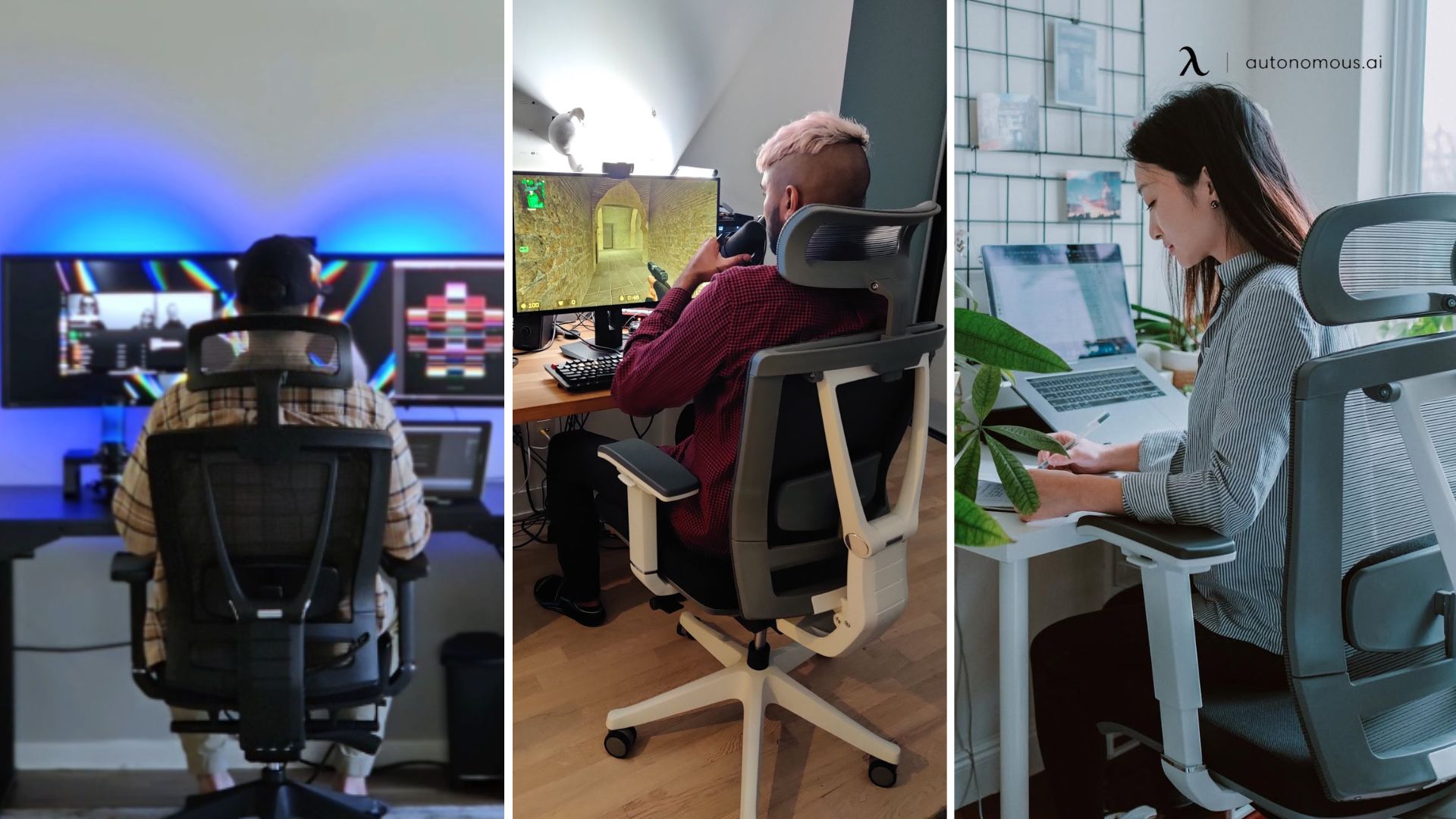
Orthopedic Chair vs Ergonomic Chair: Key Differences
Table of Contents
When it comes to office comfort and spinal health, choosing the right chair can make or break your daily productivity. But with so many terms floating around—especially orthopedic vs ergonomic chair—it’s easy to get confused. Are they the same? Does one provide better support than the other? Let’s break down the difference between orthopedic and ergonomic chair designs, and help you find the right one for your needs.
What Is an Ergonomic Office Chair?
An ergonomic office chair is built to support your body’s natural posture, especially during long hours of desk work. Unlike standard task chairs, it focuses on reducing strain, improving circulation, and preventing long-term discomfort. Whether you’re working, gaming, or studying, a good ergonomic chair adapts to your needs—not the other way around.
Key features often include:
- Adjustable seat height and depth
- Built-in lumbar support
- Recline and tilt mechanisms for dynamic sitting
- Armrest adjustments for shoulder and wrist relief
- Breathable mesh or cushioned fabric for comfort during extended use
For specific needs, ergonomic chairs come in many forms. If you like to lean back, a reclining ergonomic chair can help you switch postures without losing support. If you enjoy resting your legs, an ergonomic chair with footrest adds an extra layer of comfort. Those using standing desks might prefer a standing desk stool to stay active while seated.
Sizing also matters. If you need more space, a big and tall office chair or heavy duty office chair is better suited for broader builds and higher weight capacity. On the other hand, a petite office chair is ideal for smaller users who need a proper fit for lower back support. And for tight spaces or minimal setups, a low profile office chair blends comfort with compact design.
In short, ergonomic chairs are about long-term wellness, posture correction, and adapting to your workflow—no matter your size or style of sitting.
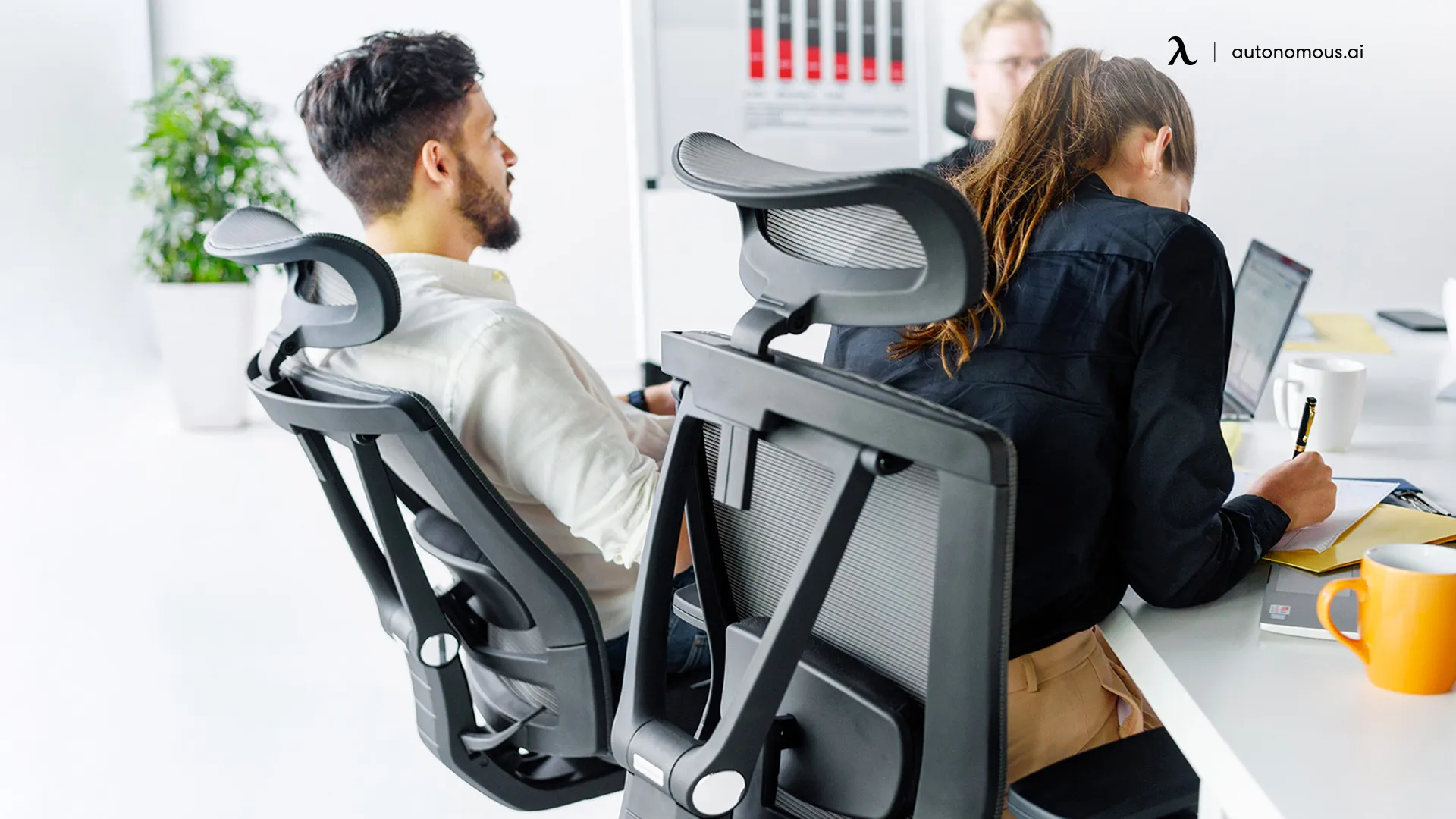
What Is an Orthopedic Office Chair?
An orthopedic office chair is specially designed to help manage or alleviate existing musculoskeletal problems. Unlike general ergonomic chairs that focus on prevention, orthopedic chairs provide targeted support for conditions like lower back pain, sciatica, hip discomfort, or recovery from injury. These chairs encourage proper spinal alignment and posture correction, offering firmer, more structured support than standard desk chairs.
Core characteristics often include:
- Contoured cushions that follow the spine’s natural curve
- Firm lumbar and pelvic support for alignment
- High-density foam or medical-grade materials
- Endorsement by chiropractors or orthopedic specialists
For those experiencing discomfort while sitting, a well-designed orthopedic chair can make a significant difference. For example, people struggling with coccyx pain might benefit from an office chair for tailbone pain, which includes pressure-relieving cushions designed to reduce strain at the base of the spine. Pregnant professionals may prefer a pregnancy office chair, which provides enhanced lumbar and hip support.
Some users may need a thick cushion office chair or a soft cushion office chair for added comfort during recovery or long periods of sitting. If you have ADHD or fidget frequently, a well-supported ADHD office chair can help you stay focused while still offering movement-friendly flexibility.
Orthopedic chairs can also cater to more specific needs, such as relieving pressure in the hips with the best office chair for hip pain, or minimizing nerve irritation with a chair for sciatica. Even seemingly unrelated features, like the ability to sit cross-legged, can offer comfort alternatives—office chairs for cross-legged sitting may appeal to users with joint sensitivity or unconventional seating preferences.
In short, orthopedic chairs are ideal for individuals with diagnosed or recurring back, hip, or joint issues. They’re less about casual comfort and more about support that helps you heal or maintain posture when standard office chairs fall short.
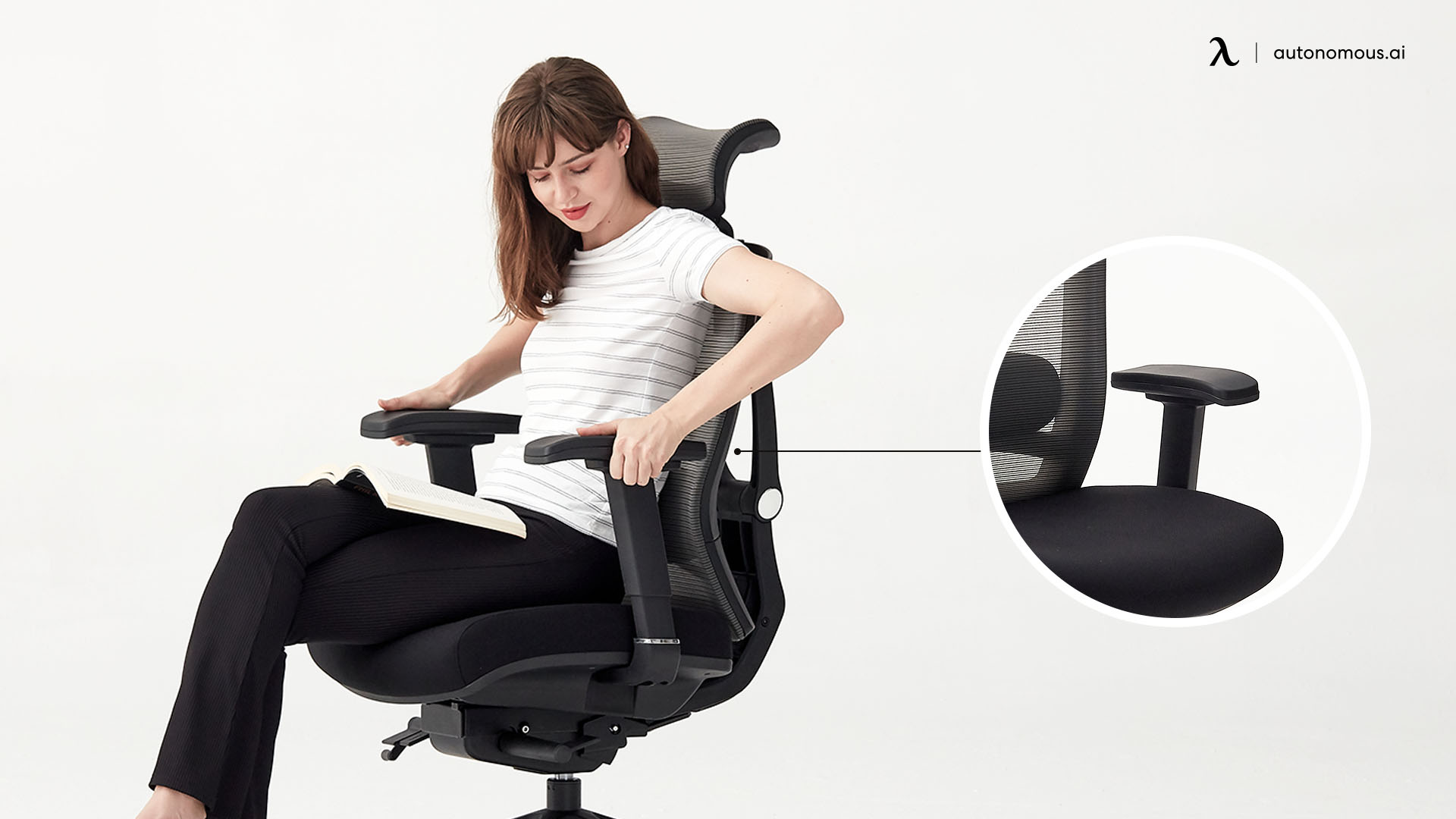
Orthopedic Chair vs Ergonomic Chair: What’s the Difference?
While both types aim to improve your sitting experience, the difference between orthopedic and ergonomic chair design lies in their purpose.
Feature | Ergonomic Chair | Orthopedic Chair |
Main Purpose | Prevent pain and discomfort | Relieve existing pain or support recovery |
Target User | General office workers | People with back pain, sciatica, joint issues |
Adjustability | Highly customizable | Less adjustable, more structured support |
Comfort Level | Focus on comfort for long use | Focus on therapeutic support |
Price Range | Varies (usually moderate) | Often higher due to medical-grade materials |
Medical Recommendation | Not needed | Sometimes prescribed by a doctor |
If you’re in good health and just need a chair that supports long hours at a desk, an ergonomic chair will do the job. If you’re dealing with chronic pain or recovering from an injury, an orthopedic chair might be the better investment.
Which Chair Should You Choose?
Ask yourself:
- Do you have ongoing back, hip, or neck pain?
- Has a doctor or physical therapist recommended a specific type of support?
- Are you sitting more than 6 hours a day?
If your answer to the first two is yes, go for an orthopedic model. Otherwise, an ergonomic office chair should suit your needs.
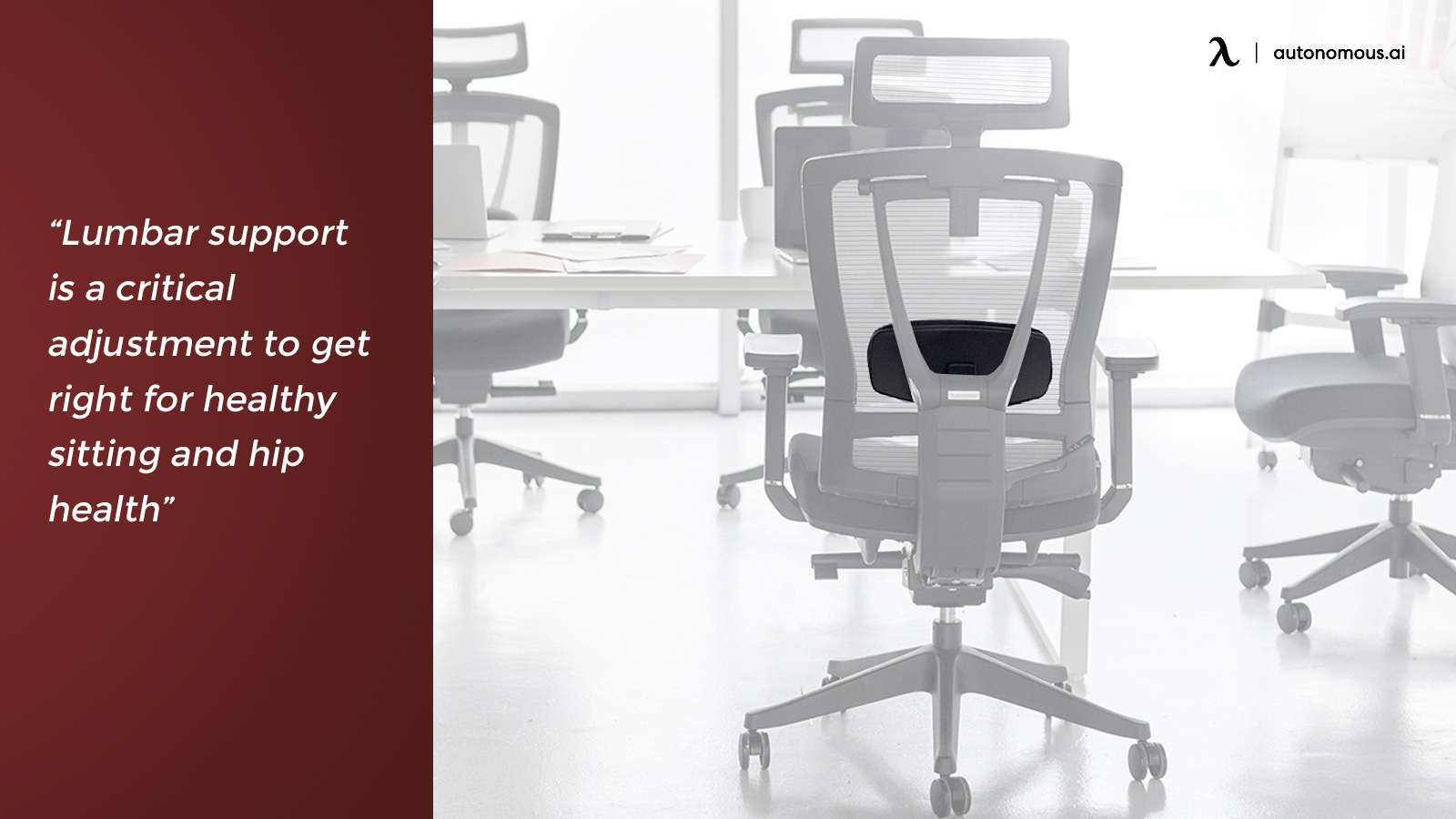
Recommended Orthopedic Office Chairs
1. ErgoChair Pro – Make Work Feel Good
The ErgoChair Pro is a smart choice for users looking for orthopedic-grade support in an ergonomic design. Whether you're working through lower back tension or just want a posture-friendly seat, this chair balances structure and flexibility with ease.
It features a 9-point adjustability system that tailors itself to your body’s needs, and a 300 lbs weight capacity ensures stability for a wide range of users. One of its standout features is the 2:1 synchro-tilt mechanism, where the backrest reclines twice as far as the seat. This keeps your thighs level and your pelvis aligned—an important detail for anyone managing lower back stiffness.
Users dealing with discomfort will appreciate its customizable lumbar cushion, which adjusts vertically to support your spine's natural curve. It’s a key benefit for those searching for an ergonomic chair for back pain, especially if you're sitting for long hours. Pair that with a breathable mesh back or cushioned polyester fabric seat, and you’ve got comfort that lasts through the longest days.
Need more neck support? The headrest option helps complete your setup, making this an ideal office chair with headrest for total spine alignment. And if lumbar support is a must-have, the Pro delivers one of the best office chairs with adjustable lumbar support in its price range.
With over 2,000 customer reviews and a 4.4-star rating, the ErgoChair Pro continues to impress with its blend of adjustability, aesthetics, and orthopedic benefits. Whether you're upgrading your home office or replacing a generic task chair, it’s a solid investment in your daily comfort and spinal health.

Autonomous ErgoChair Pro
| Dimensions | 29”L x 29”W x 46” - 50”H |
|---|---|
| Seat dimensions | 20”L x 20”W |
| Seat height | 18” - 20” |
| Back dimensions (w/o headrest) | 21”W x 22”H |
| Back dimensions (with headrest) | 21”W x 28” - 31”H |
| Tilt range | 22° |
| Armrest height | 11” - 14” |
| Armrest height (from the floor) | 26.7” - 32.2” |
| Caster wheel diameter | 2.36 inches |
| Number of caster wheels | 5 pieces |
| Materials | Polyester fabric with molded foam interior and durable nylon plastic frame; PU handrest pads. |
| Colors | Cool Gray, Evergreen, All Black Red Apple, Black & White, Baby Blue |
| Weight capacity | 300 lbs |
| Item weight | 48.5 lbs |
| Shipping dimensions | 29”L x 27”W x 19”H x 67 lbs |
| Assembly required | Yes |
| Warranty | 2 years |
| Free returns | 30 days The trial and return policy does NOT apply to products on sale. |
| Adjustability | Headrest, armrest, back tilt angle and tension, seat tilt and height. |
2. ErgoChair Ultra 2 – Fuel Your Active Lifestyle
For those seeking a more advanced orthopedic solution, the ErgoChair Ultra 2 brings high-performance design and spinal care together. Inspired by endurance cycling saddles, it features a 4-layer seat matrix made of breathable mesh, memory foam, TPE, and a flexible spring system. This unique combination is designed to reduce pressure on your sit bones and keep you comfortable during long work sessions.
What truly sets the Ultra 2 apart is its adaptive backrest. Built with flexible, spine-inspired ribs, the backrest moves with your posture instead of resisting it. This fluid support helps reduce stiffness and tension—especially beneficial for users looking for a posture office chair that aligns with the natural curve of the spine. It’s also an ideal option for anyone struggling with upper body fatigue or searching for the best office chair for neck pain, thanks to the optional headrest and free shoulder movement.
The invisible X-shaped lumbar support adds subtle reinforcement to the lower back without restricting your range of motion. Unlike static chairs, the ErgoChair Ultra 2 responds to your movements—encouraging dynamic sitting to reduce back pressure throughout the day.
This chair also excels in breathability. Its Air Mesh technology is 3–5 times more breathable than standard mesh, so you stay cool even during long hours of focused work. For those who need customization, the Ultra 2 includes highly adjustable components, including a seat with adjustable depth to suit different leg lengths, and adjustable armrests for optimized elbow and shoulder alignment.
Between the ErgoChair Pro and Ultra 2, your choice comes down to style and mobility. The Pro provides structured support with more traditional lumbar adjustments, while the Ultra 2 is engineered for those who want movement-friendly, adaptive posture support and long-term comfort. Both are orthopedic-recommended options for improving spinal alignment, preventing pain, and creating a workspace that truly supports your health.
.jpg)
ErgoChair Ultra 2
| Dimensions (w/o headrest) | 28”L x 28”W x 41” - 46”H |
|---|---|
| Dimensions (with headrest) | 28”L x 28”W x 49” - 58”H |
| Seat dimensions | 18”L x 18”W |
| Seat depth range | 18” - 20.5” |
| Seat height | 18” - 23” |
| Headrest | 8" - 12" |
| Back dimensions | 20”W x 23”H |
| Tilt range | 25° |
| Armrest height | 7” - 11” |
| Armrest height (from the floor) | 23.5” - 27.7” |
| Caster wheel diameter | 2.56 inches |
| Number of caster wheels | 5 pieces |
| Materials | 100% TPE and polyester fabric upholstery with ABS plastic frame, aluminium base |
| Colors | Onyx Black, Dover Gray |
| Weight capacity | 320 lbs |
| Item weight | 36.5 lbs |
| Shipping dimensions | 28”L x 17”W x 31”H x 45 lbs |
| Assembly required | Yes |
| Warranty | 2 years |
| Free returns | 30 days |
| Adjustability | Headrest, armrest, back tilt angle and tension, seat height. |
FAQs
Can an ergonomic chair help with back pain?
Yes—especially if your discomfort is posture-related or caused by long sitting hours. Ergonomic chairs are designed to support spinal alignment and reduce strain. However, for more serious conditions like sciatica or post-surgical recovery, orthopedic chairs tend to offer more targeted relief.
Are orthopedic office chairs covered by insurance or FSA?
They can be. If prescribed by a healthcare professional, some orthopedic chairs may qualify for FSA reimbursement or even partial insurance coverage. Always check with your provider and confirm what's needed for eligibility.
Can I use an orthopedic chair even if I don’t have back issues?
Yes. Anyone can use an orthopedic chair, but they are generally firmer and more structured. If you don’t need that level of support, a highly adjustable ergonomic chair might feel more comfortable for everyday use.
What is the difference between an ergonomic chair and an orthopedic chair?
An ergonomic chair is made to prevent discomfort through adjustability and movement support. An orthopedic chair, on the other hand, is designed to relieve existing pain and offer firm, medical-grade support for conditions like lower back pain or poor posture.
What type of office chair is best for posture?
The best chairs for posture are those that support the spine’s natural curve and encourage upright sitting. Choosing between mid-back vs high-back chairs can also depend on your height and how much upper back and neck support you need.
What is the difference between an ergonomic chair and an office chair?
Ergonomic chairs prioritize adjustability, back support, and dynamic movement—unlike many standard office chairs that lack posture-friendly features. For a deeper breakdown, compare office chairs vs gaming chairs to see how ergonomic design varies by purpose.
How do you sit on an orthopedic chair?
Sit fully back in the seat with your spine aligned along the backrest. Keep your feet flat on the floor and your knees at a 90-degree angle. If you're unsure about setup, even stools vs chairs can impact your posture depending on your sitting habits and mobility needs.
Conclusion
The orthopedic chair vs ergonomic chair debate comes down to one key thing: your body’s needs. Ergonomic chairs are perfect for prevention and comfort, while orthopedic chairs serve those already managing pain or recovering from injury.
If you’re simply looking to avoid strain from long hours at your desk, an ergonomic chair with good adjustability will likely serve you well. But if you need relief and support for an existing condition, investing in an orthopedic model is a smart, health-first decision.
Spread the word
.svg)


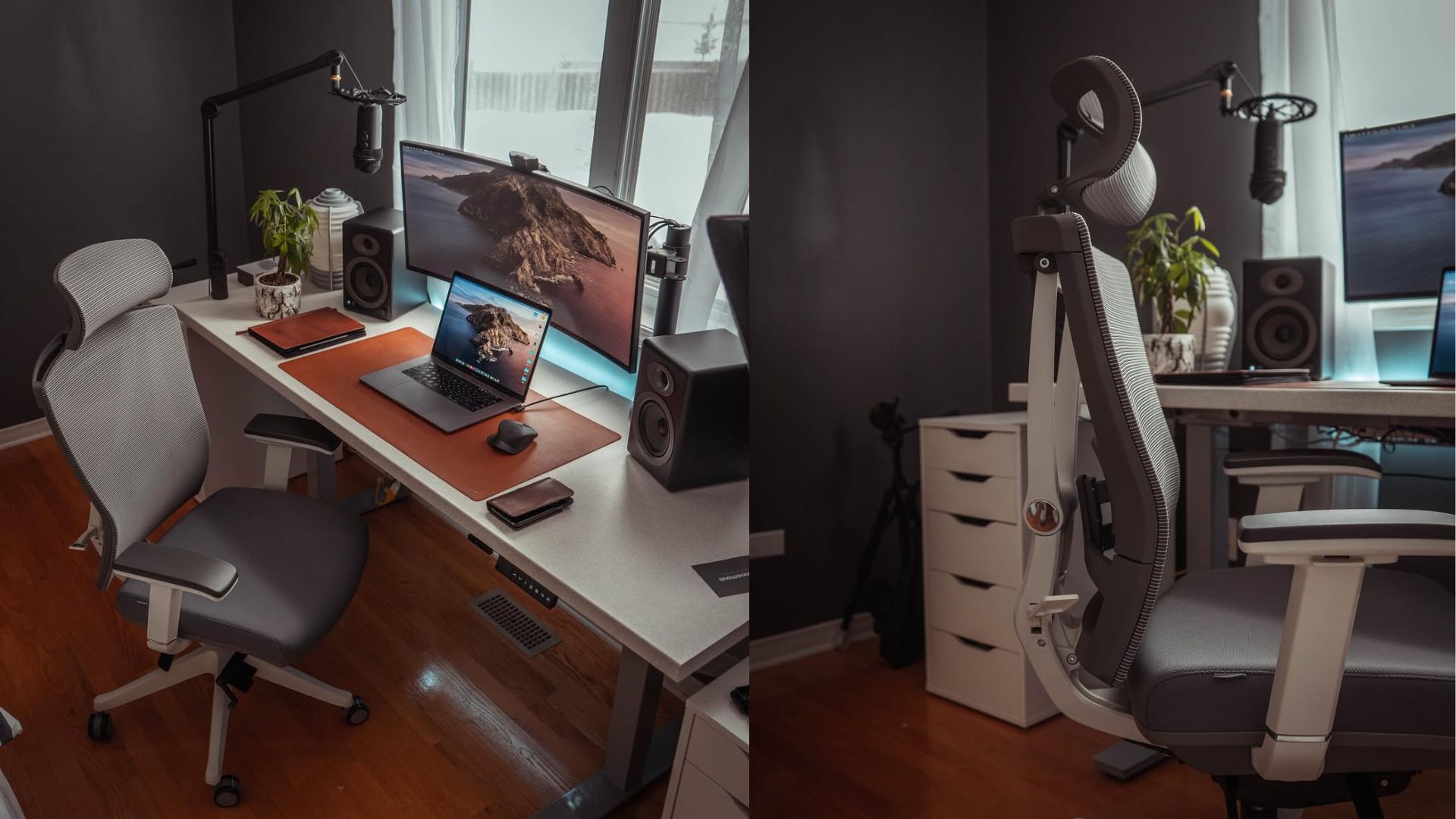
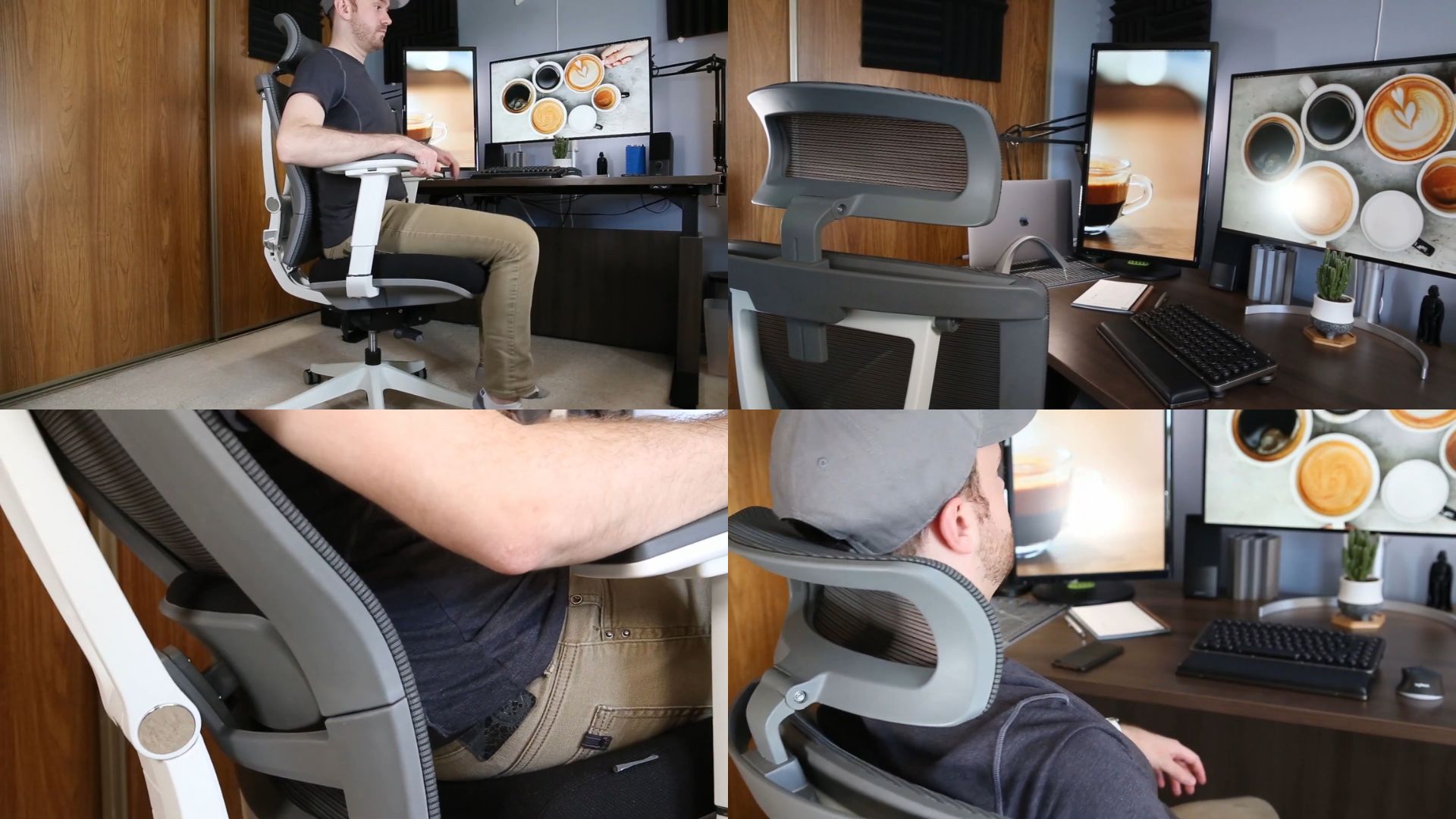
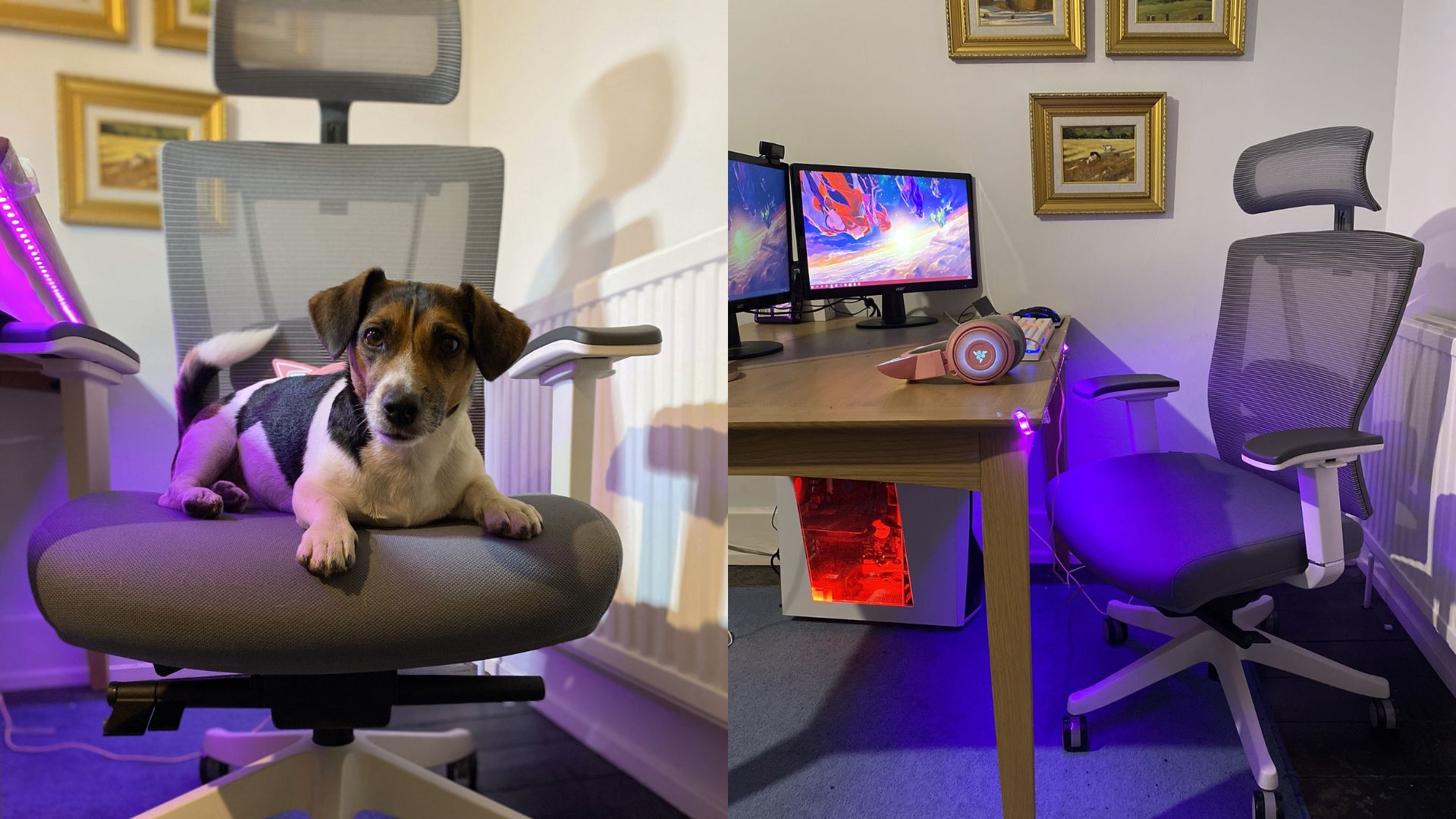
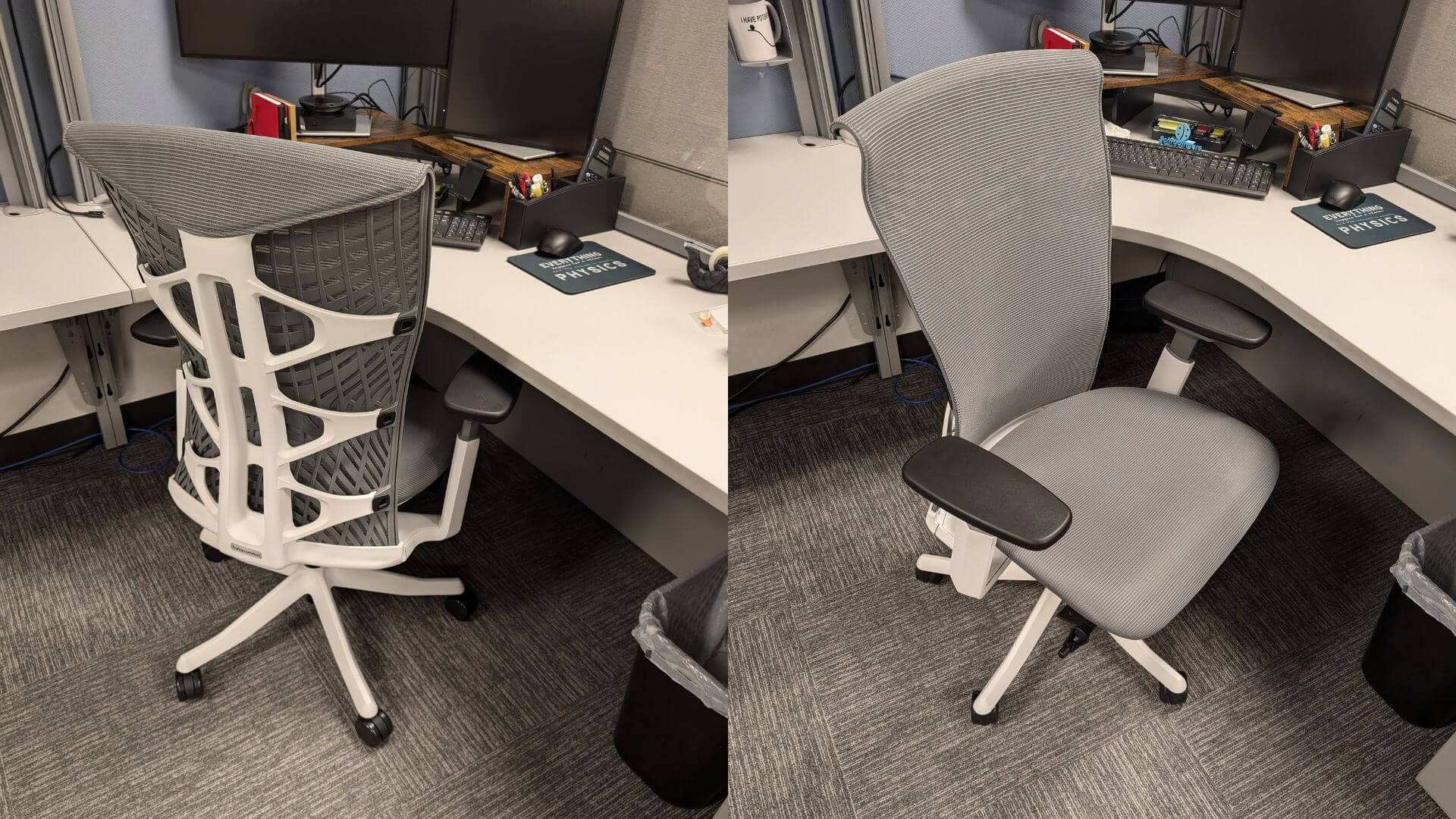
(1).webp)
